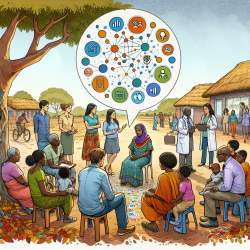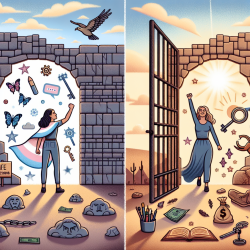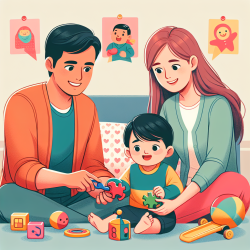Introduction
In the realm of humanitarian aid, addressing the unique needs of displaced adolescent girls and women is crucial. The research article "Innovative strategies for providing menstruation-supportive water, sanitation and hygiene (WASH) facilities: learning from refugee camps in Cox’s Bazar, Bangladesh" provides valuable insights into improving menstrual hygiene management (MHM) in emergency contexts. This blog aims to highlight the innovative strategies identified in the study and encourage practitioners to implement these findings to enhance the well-being of female beneficiaries.
Understanding the Challenges
Menstrual hygiene management is a critical issue in refugee camps, where over 21 million displaced adolescent girls and women globally face challenges due to inadequate WASH facilities. The research conducted in the Rohingya refugee camps in Cox's Bazar (CXB), Bangladesh, identifies several barriers, including insufficient materials, lack of private spaces for changing and disposing of menstrual waste, and cultural stigmas surrounding menstruation.
Innovative Solutions
- Female-Driven Consultation Methods: The study emphasizes the importance of involving female beneficiaries in the design and construction of WASH facilities. This participatory approach ensures that the facilities meet the specific needs of women and girls, fostering a sense of ownership and empowerment.
- Multi-Purpose WASH Facilities: The research highlights the benefits of designing multi-purpose WASH spaces that provide privacy and reduce stigma. These facilities allow women to manage their menstrual hygiene discreetly, promoting dignity and comfort.
- Menstrual Waste Disposal Innovations: Novel strategies for menstrual waste disposal, such as discreet chute systems, have been piloted in the camps. These innovations address cultural taboos and provide a safe and hygienic way to manage menstrual waste.
- Engaging Male Beneficiaries: The study underscores the importance of involving men in the design process to generate support for female-friendly WASH facilities. This engagement helps challenge cultural norms and promotes a more inclusive approach to MHM.
Implications for Practitioners
Practitioners working in humanitarian settings can draw valuable lessons from this research to improve their MHM interventions. By adopting female-driven consultation methods, designing multi-purpose WASH facilities, and implementing innovative waste disposal solutions, practitioners can create more effective and sustainable programs. Additionally, engaging male beneficiaries can foster a supportive environment for women's health and hygiene needs.
Encouraging Further Research
While the study presents promising strategies, further research is needed to assess the long-term viability and scalability of these innovations. Practitioners are encouraged to conduct operational research to ensure the sustained acceptability and effectiveness of MHM interventions. By continuously evaluating and refining these approaches, we can create lasting positive impacts on the lives of displaced girls and women.
To read the original research paper, please follow this link: Innovative strategies for providing menstruation-supportive water, sanitation and hygiene (WASH) facilities: learning from refugee camps in Cox’s Bazar, Bangladesh.










